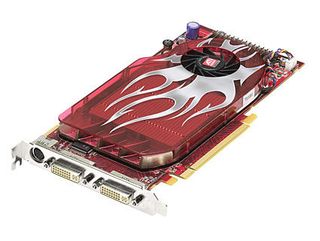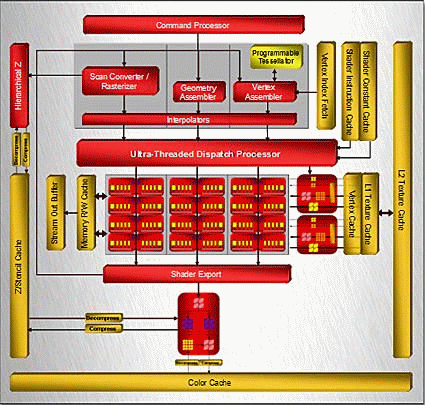HD 2600 & GeForce 8600: No Mid-Range?
Where's The Beef?

(Top Row) ATI HD 2600 XT, HIS 9600 XT, Sparkle 8600 GT (Bottom Row) ATI HD 2600 Pro, Gainward Ti4200, EVGA 8600 GTS
ATI has released its HD 2600 and 2400 series cards to market, but is anyone really taking notice? The playing field looks like an uphill battle for the graphics maker, but they are not really alone. Some serious issues exist with the latest card launches from ATI and Nvidia, and they leave us asking several questions. Do these cards have a place in the market? What about Nvidia's 8600, 8500 and 8400 cards? And what happened to a middle-of-the-road compromise on price and performance?
Each of these questions leads us to an interesting yet disturbing reality. We fear that those buying "DX10" cards in the hope that they will play the highly anticipated game titles due out later this year will be sorely disappointed in the performance levels. To answer these questions we must first start by looking at the offerings by ATI and then compare and contrast it against what Nvidia has to offer. Finally we will examine what is happening in the industry: the current state of graphics for the mainstream gamer is weak at best, and leaves us asking for more from the graphics makers.
HD 2600 And Below

ATI Radeon HD 2600 XT
| Desktop Retail Name | Processor |
|---|---|
| HD 2900 | R600 |
| HD 2600 | RV630 |
| HD 2400 | RV610 |
So what makes up HD 2600? Looking back to the R600 launch, we went through the architectural differences between the R600, RV610 and RV630. The changes are primarily in the number of units inside each core, the fabrication process and the clock frequencies. In the two diagrams below, you can see a serious reduction in shaders from the R600.

RV630 architecture for Radeon HD
The R600 on the HD 2900 XT has four SIMD arrays with 80 shaders, for a total of 320 unified shaders. The HD 2600 series cards have three SIMD arrays but half the shaders per array. This takes the total shader count down to 120, or a little more than one third the shader horsepower of the R600. There is also a difference in the texture units: ATI put in 4 texture units for the R600, which most of us in the industry feel was a liability of the chip, limiting texture fill rates. HD 2600 series cards only have two units - this might be alright in the balance of power, as a third of the shaders of the R600 are being fed by half the texture filling capacity. R600, RV610, and RV630 processors have a 32K unified L1 cache for all of the SIMD arrays, each of which is backed up by a secondary L2 cache. R600 has a 256K L2 while HD 2600 only has a 128K L2, and the HD 2400 does not have one at all. Last but not least, unlike R600's four render back ends for post processing, both the HD 2600 and HD 2400 only have one for antialiasing techniques, gamma correction, alpha/fog and other effects.
Stay on the Cutting Edge
Join the experts who read Tom's Hardware for the inside track on enthusiast PC tech news — and have for over 25 years. We'll send breaking news and in-depth reviews of CPUs, GPUs, AI, maker hardware and more straight to your inbox.

RV630 architecture for Radeon HD 2600
The HD 2400 is even more limited than the HD 2600 when compared to R600. The processor only has two SIMD arrays, but with 20 shaders. That means a total of 40 unified shaders compared to R600's 320, only 1/8 the original shader horsepower. Instead of two texture units, HD 2400 only has one; this paints a grim picture of what you should expect out of both of these processors.
Most Popular

